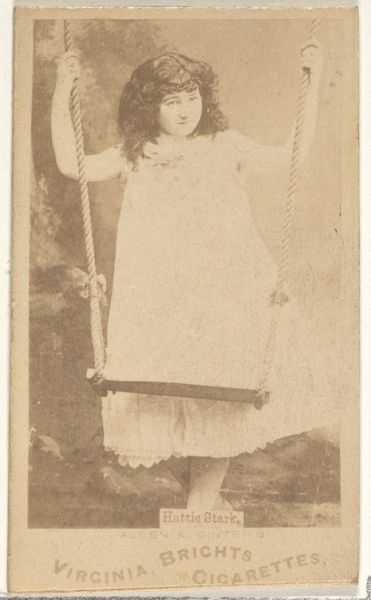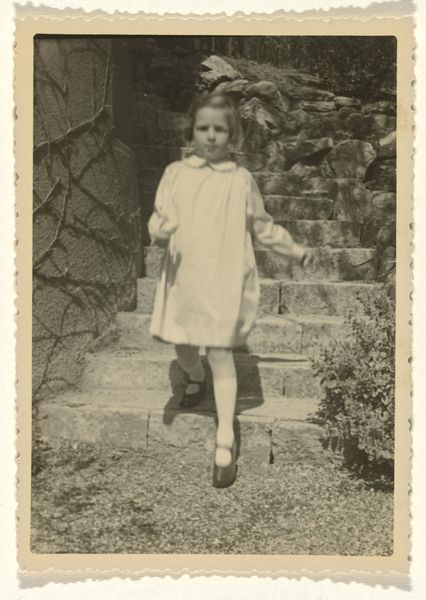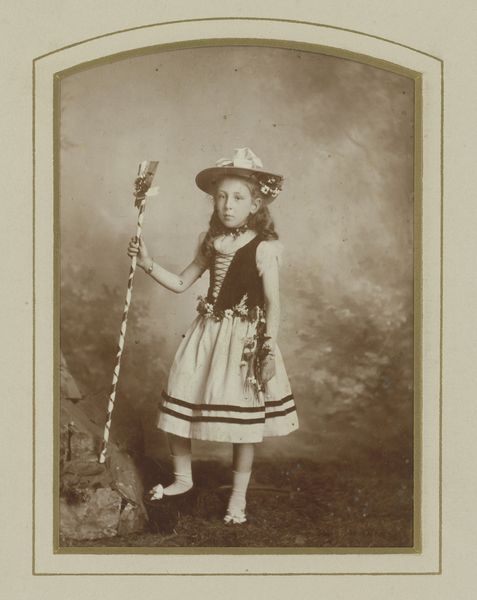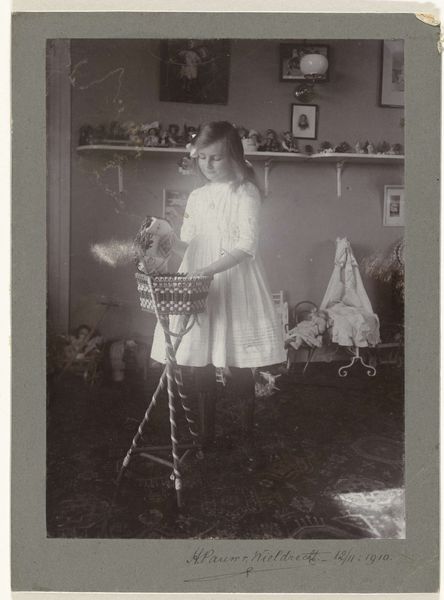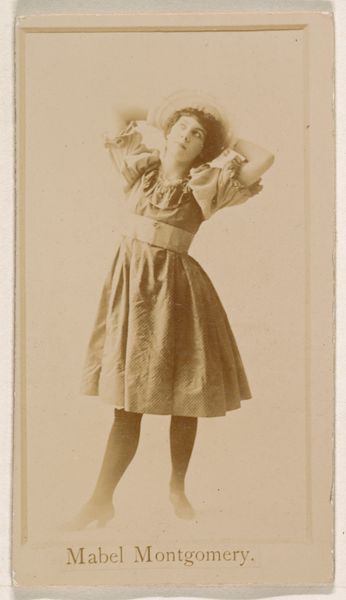
Isabel Wachenheimer met gestrekte armen en handen op een touw voor een vijver, oktober 1936 1936
0:00
0:00
photography
#
portrait
#
photography
#
genre-painting
#
realism
Dimensions: height 70 mm, width 50 mm
Copyright: Rijks Museum: Open Domain
Curator: This is a photograph titled "Isabel Wachenheimer met gestrekte armen en handen op een touw voor een vijver, oktober 1936." Editor: Immediately, I'm struck by its innocence. There’s a simple joy captured, despite the rather somber monochromatic palette and what appears to be a slightly overgrown, perhaps wild setting. Curator: Yes, taken in 1936, it exists within a historical context of growing political unease, yet the image itself seems to resist that heaviness, focusing instead on the carefree attitude of its subject, Isabel. The genre seems simple and honest in its realism. Editor: Right. You can't ignore the political climate hanging in the background, though. This wasn't just any innocent moment; it's framed, deliberately or not, by a context of impending societal shift, particularly for Jewish communities across Europe. Look at how she is literally, slightly, clinging. Curator: The image certainly gains another layer when viewed through that lens. Consider also how photography in the interwar period developed as both a means of artistic expression and a documentary tool. Family photographs became even more critical at such uncertain times to memorialize life. Editor: Exactly! How does this act of preservation operate considering questions of identity? Does the simplicity of the composition and pose normalize the subject in a time when it was most urgent to feel normal or other, perhaps to subvert any political discourse? Curator: Or perhaps to quietly assert humanity in the face of rising dehumanization. Note how the positioning of the fence parallels her outstretched arms; what does it reveal? Perhaps confinement of some sort? Editor: What does it mean for her childhood that we are looking back on? It pushes the image beyond mere portraiture to something that subtly reflects a broader anxiety and desire. Curator: It really allows us to consider the function of imagery within times of cultural or political distress. Editor: I feel how something on the surface looks innocent, may hide the historical reality.
Comments
No comments
Be the first to comment and join the conversation on the ultimate creative platform.
